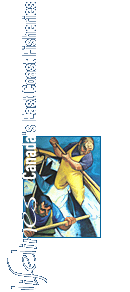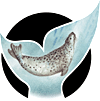|
Once killed, whales were stripped of the thick
blubber surrounding their bodies and, if they were baleen whales,
the whalebone was taken from the upper jaws.
 he tools used to process
whales were of distinct sizes and shapes to accomplish specific
tasks. Specialized spades were employed to slice into the
carcasses; cut the skin and blubber into blanket pieces; separate
the blubber from the flesh; sever heads, fins, and jaws; and split
heads open. he tools used to process
whales were of distinct sizes and shapes to accomplish specific
tasks. Specialized spades were employed to slice into the
carcasses; cut the skin and blubber into blanket pieces; separate
the blubber from the flesh; sever heads, fins, and jaws; and split
heads open.
|



